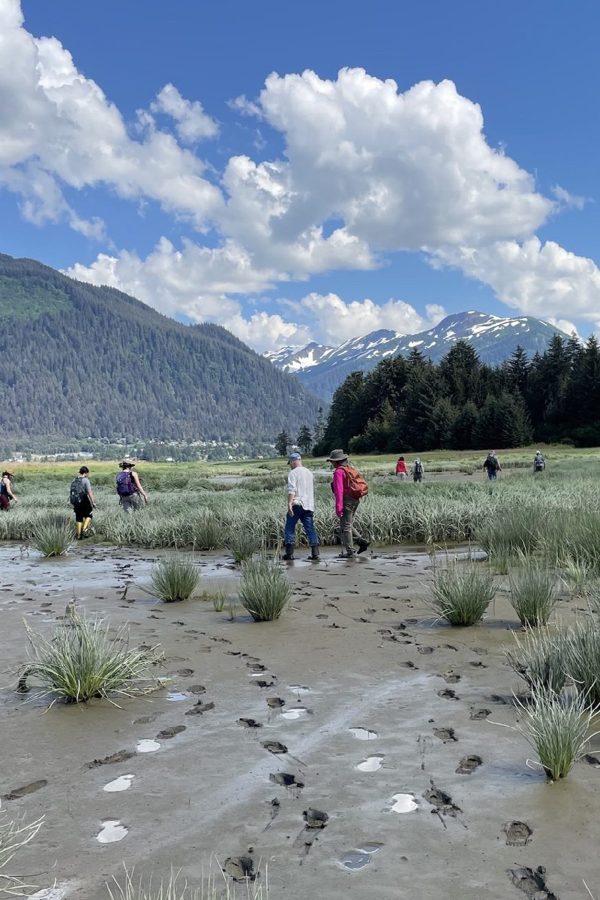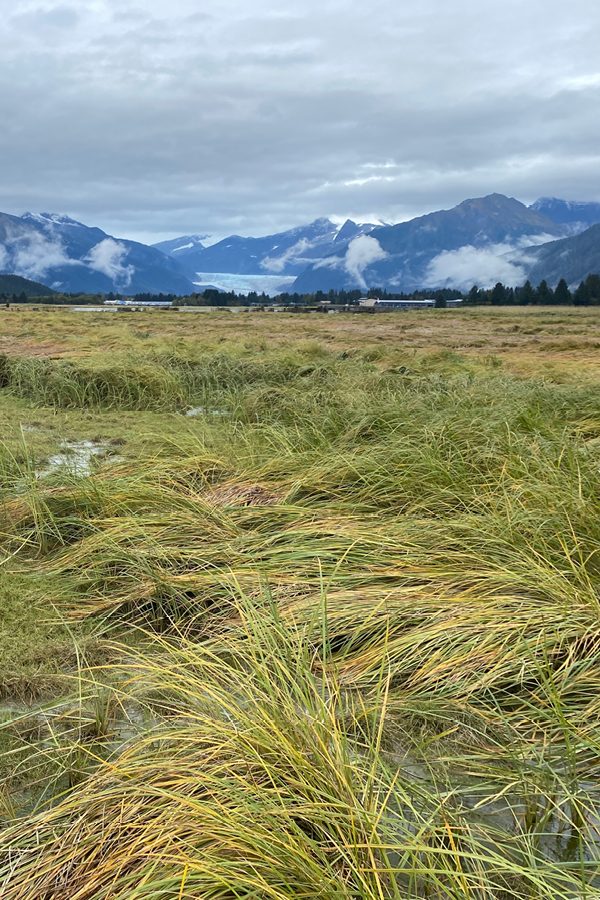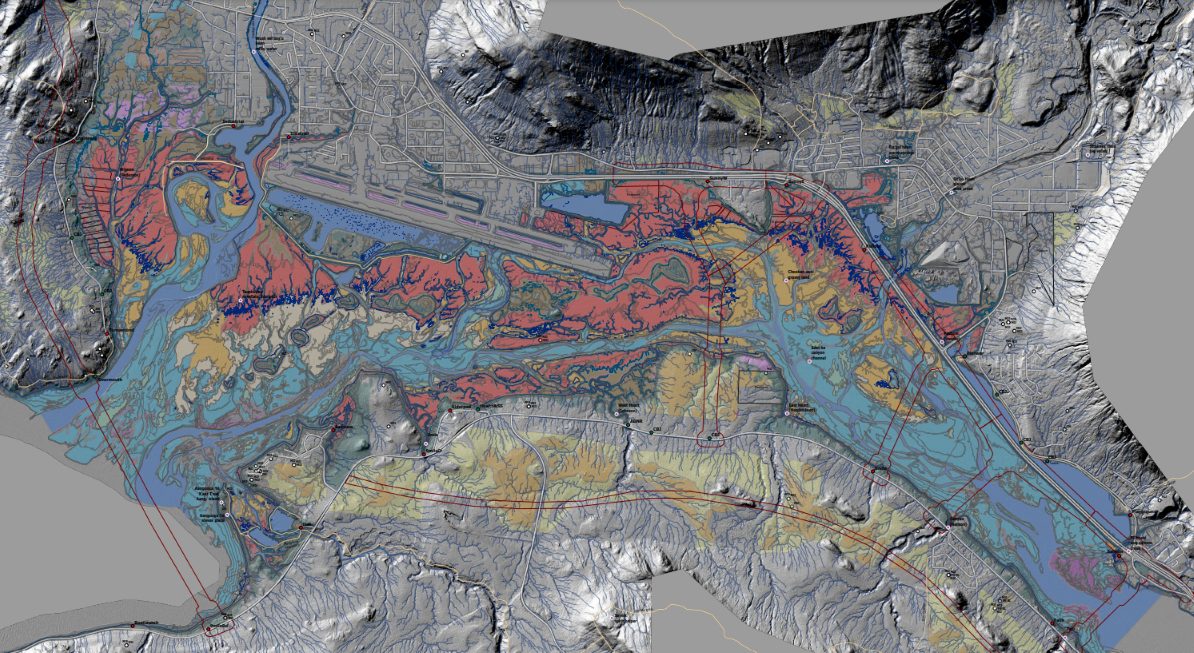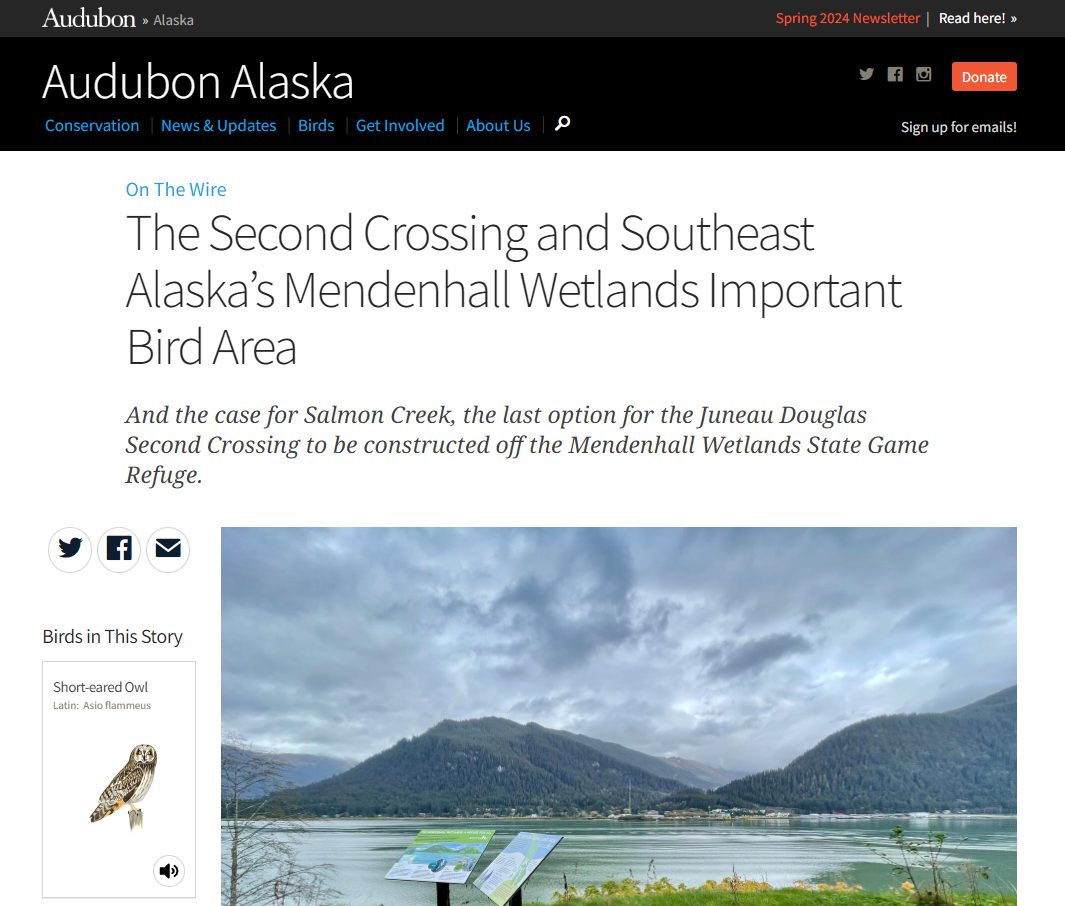Mendenhall Wetlands
TAASHUYEE-CHOOKAN.AANI
Lingít for river flats-grassy land
The Mendenhall Wetlands complex: Over 5,000 acres of estuarine habitat between mainland Juneau and Douglas Island

Within the wetlands and nestled in the geographic heart of Juneau, the Mendenhall Wetlands State Game Refuge encompasses 3,764 acres of open land for wildlife habitat and public recreation. The wetlands are a series of estuaries created by the numerous streams originating in the surrounding mountains. As the tides ebb and flow, the wetlands alternate from grassland to shallow sea. The varying salt conditions produce a diverse community of plants, from sedge meadows and beach rye to spruce-hemlock forests in the surrounding uplands. The diverse vegetation provides resting and feeding habitat for spring and fall migrations of waterfowl and shorebirds, and the Refuge was designated as a globally significant Important Bird Area in 2007 by the National Audubon Society. A total of 230 species of resident and migratory birds frequent the area, representing nearly 70% of all birds in Southeast Alaska. The Refuge also supports a dozen different mammals, eight anadromous fish species, and an abundance of marine life.

Taashuyee is a priority area for conservation due to climate change, glacial uplift, and encroaching development. The Southeast Alaska Land Trust works with private landowners surrounding the Refuge to protect accreted lands. See our Accreted Lands Project for more information.
Mendenhall Wetlands StoryMap
In 2021, the Southeast Alaska Land Trust partnered with the U.S. Fish and Wildlife Service and Discovery Southeast to produce a StoryMap. This StoryMap features the Mendenhall Wetlands and the Mendenhall Wetlands State Game Refuge – two overlapping areas iconic to the Juneau landscape.
SEALT has worked for over 25 years to conserve properties abutting the Refuge to help preserve the Refuge boundary and protect both critical wildlife habitat and a beloved recreation area.
Click this link to see the full screen version.
Juneau-Douglas North Crossing
The Southeast Alaska Land Trust is actively participating in the ongoing Planning and Environmental Linkages (PEL) Study as a member of the Technical Advisory Committee. The PEL Study is sponsored by ADOT&PF and CBJ to consider possible locations for a second bridge or crossing between mainland Juneau and Douglas Island. We will continue to thoughtfully and consistently engage with this study and any subsequent discussions about a second crossing to highlight the importance of protecting SEALT’s conservation properties, SEALT’s wetland mitigation sites, and the Mendenhall Wetlands State Game Refuge that supports their functions.
An excerpt from our policy statement:
“The Southeast Alaska Land Trust has an enduring interest in preserving the Mendenhall Wetlands State Game Refuge, based on a 25-year investment in the private conservation of lands surrounding the Refuge. While SEALT welcomes necessary development for the community of Juneau, the Refuge is not a suitable location for any second crossing between Juneau and Douglas Island.”

Well- and poorly known portals onto Taashuyee-Chookan.aani
2024 | Richard Carstensen
There are several ways onto the Mendenhall Wetlands, including formal ADFG access points and lesser known corridors with legal public access!
habitat mapping project
In the fall of 2023, SEALT engaged a team of wetlands specialists through Bosworth Botanical Consulting to create a digital habitat map of the project area and assess its wetlands, salt marshes, and tidelands. The goal of this landmark project is to support the Land Trust’s work on Taashuyee, as well as the ADF&G’s stewardship of the Refuge.
While a more detailed map has been shared with our key partners, we are pleased to make this version available to the public! Click on the arrows in the upper left corner to show the legend, and toggle the layers off and on to explore this map.

